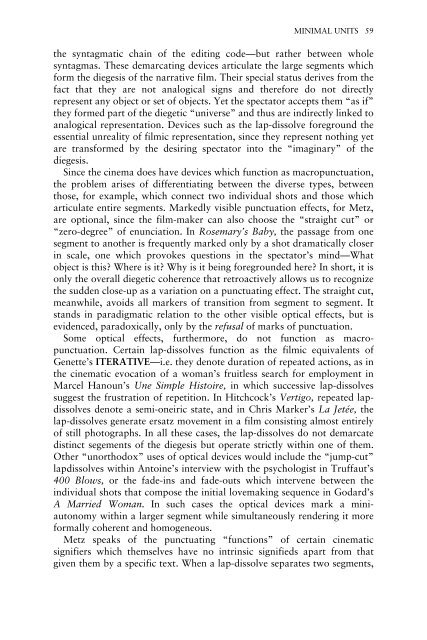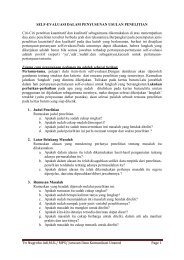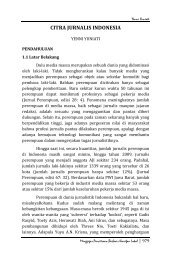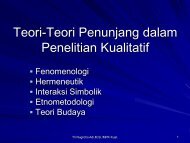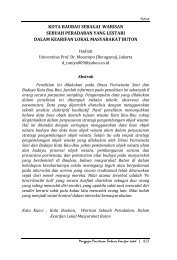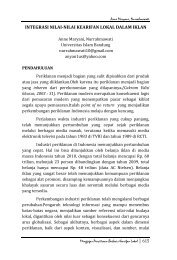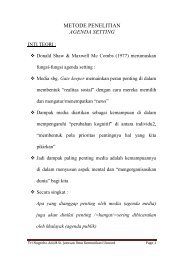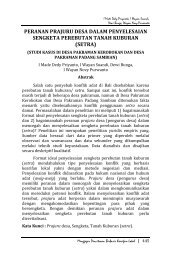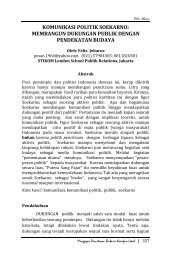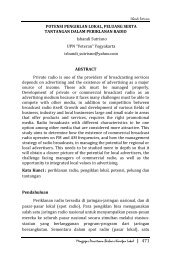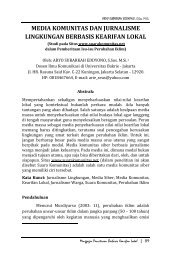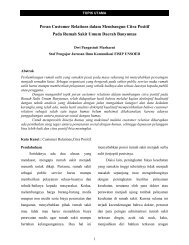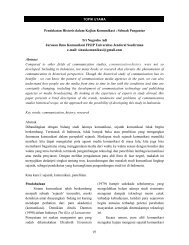New Vocabularies in Film Semiotics
New Vocabularies in Film Semiotics
New Vocabularies in Film Semiotics
You also want an ePaper? Increase the reach of your titles
YUMPU automatically turns print PDFs into web optimized ePapers that Google loves.
MINIMAL UNITS 59<br />
the syntagmatic cha<strong>in</strong> of the edit<strong>in</strong>g code—but rather between whole<br />
syntagmas. These demarcat<strong>in</strong>g devices articulate the large segments which<br />
form the diegesis of the narrative film. Their special status derives from the<br />
fact that they are not analogical signs and therefore do not directly<br />
represent any object or set of objects. Yet the spectator accepts them “as if”<br />
they formed part of the diegetic “universe” and thus are <strong>in</strong>directly l<strong>in</strong>ked to<br />
analogical representation. Devices such as the lap-dissolve foreground the<br />
essential unreality of filmic representation, s<strong>in</strong>ce they represent noth<strong>in</strong>g yet<br />
are transformed by the desir<strong>in</strong>g spectator <strong>in</strong>to the “imag<strong>in</strong>ary” of the<br />
diegesis.<br />
S<strong>in</strong>ce the c<strong>in</strong>ema does have devices which function as macropunctuation,<br />
the problem arises of differentiat<strong>in</strong>g between the diverse types, between<br />
those, for example, which connect two <strong>in</strong>dividual shots and those which<br />
articulate entire segments. Markedly visible punctuation effects, for Metz,<br />
are optional, s<strong>in</strong>ce the film-maker can also choose the “straight cut” or<br />
“zero-degree” of enunciation. In Rosemary’s Baby, the passage from one<br />
segment to another is frequently marked only by a shot dramatically closer<br />
<strong>in</strong> scale, one which provokes questions <strong>in</strong> the spectator’s m<strong>in</strong>d—What<br />
object is this? Where is it? Why is it be<strong>in</strong>g foregrounded here? In short, it is<br />
only the overall diegetic coherence that retroactively allows us to recognize<br />
the sudden close-up as a variation on a punctuat<strong>in</strong>g effect. The straight cut,<br />
meanwhile, avoids all markers of transition from segment to segment. It<br />
stands <strong>in</strong> paradigmatic relation to the other visible optical effects, but is<br />
evidenced, paradoxically, only by the refusal of marks of punctuation.<br />
Some optical effects, furthermore, do not function as macropunctuation.<br />
Certa<strong>in</strong> lap-dissolves function as the filmic equivalents of<br />
Genette’s ITERATIVE—i.e. they denote duration of repeated actions, as <strong>in</strong><br />
the c<strong>in</strong>ematic evocation of a woman’s fruitless search for employment <strong>in</strong><br />
Marcel Hanoun’s Une Simple Histoire, <strong>in</strong> which successive lap-dissolves<br />
suggest the frustration of repetition. In Hitchcock’s Vertigo, repeated lapdissolves<br />
denote a semi-oneiric state, and <strong>in</strong> Chris Marker’s La Jetée, the<br />
lap-dissolves generate ersatz movement <strong>in</strong> a film consist<strong>in</strong>g almost entirely<br />
of still photographs. In all these cases, the lap-dissolves do not demarcate<br />
dist<strong>in</strong>ct segements of the diegesis but operate strictly with<strong>in</strong> one of them.<br />
Other “unorthodox” uses of optical devices would <strong>in</strong>clude the “jump-cut”<br />
lapdissolves with<strong>in</strong> Anto<strong>in</strong>e’s <strong>in</strong>terview with the psychologist <strong>in</strong> Truffaut’s<br />
400 Blows, or the fade-<strong>in</strong>s and fade-outs which <strong>in</strong>tervene between the<br />
<strong>in</strong>dividual shots that compose the <strong>in</strong>itial lovemak<strong>in</strong>g sequence <strong>in</strong> Godard’s<br />
A Married Woman. In such cases the optical devices mark a m<strong>in</strong>iautonomy<br />
with<strong>in</strong> a larger segment while simultaneously render<strong>in</strong>g it more<br />
formally coherent and homogeneous.<br />
Metz speaks of the punctuat<strong>in</strong>g “functions” of certa<strong>in</strong> c<strong>in</strong>ematic<br />
signifiers which themselves have no <strong>in</strong>tr<strong>in</strong>sic signifieds apart from that<br />
given them by a specific text. When a lap-dissolve separates two segments,


